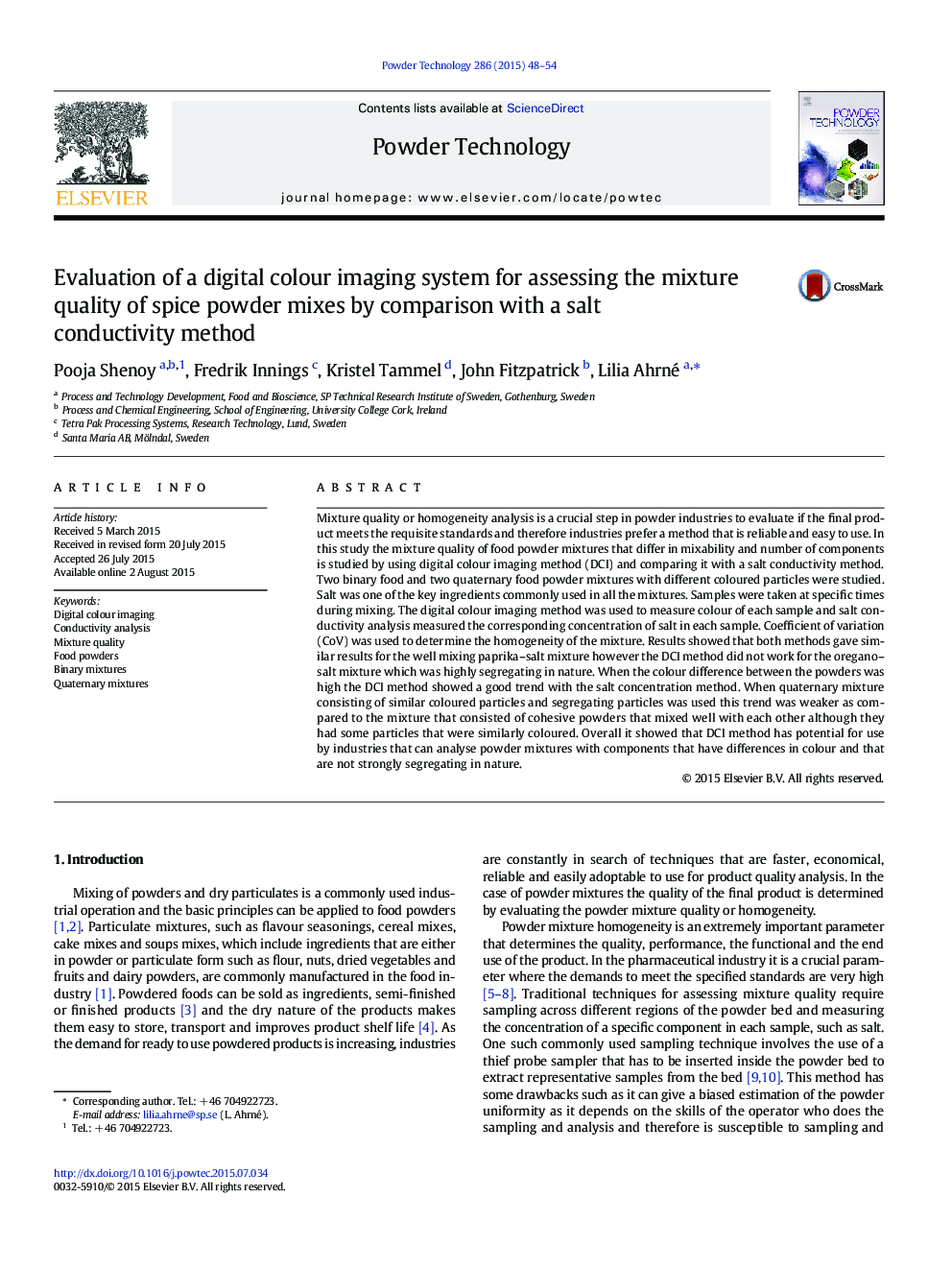| کد مقاله | کد نشریه | سال انتشار | مقاله انگلیسی | نسخه تمام متن |
|---|---|---|---|---|
| 235205 | 465631 | 2015 | 7 صفحه PDF | دانلود رایگان |
• Quaternary and binary spice powder mixtures were used in this work.
• Mixture quality (MQ) analysed by salt conductivity and digital colour imaging (DCI).
• DCI has good potential to evaluate MQ of food powder mixtures.
• Salt conductivity and DCI showed strong trend for well mixing powders.
• Segregation and lesser colour difference in powders hinder the application of DCI.
Mixture quality or homogeneity analysis is a crucial step in powder industries to evaluate if the final product meets the requisite standards and therefore industries prefer a method that is reliable and easy to use. In this study the mixture quality of food powder mixtures that differ in mixability and number of components is studied by using digital colour imaging method (DCI) and comparing it with a salt conductivity method. Two binary food and two quaternary food powder mixtures with different coloured particles were studied. Salt was one of the key ingredients commonly used in all the mixtures. Samples were taken at specific times during mixing. The digital colour imaging method was used to measure colour of each sample and salt conductivity analysis measured the corresponding concentration of salt in each sample. Coefficient of variation (CoV) was used to determine the homogeneity of the mixture. Results showed that both methods gave similar results for the well mixing paprika–salt mixture however the DCI method did not work for the oregano–salt mixture which was highly segregating in nature. When the colour difference between the powders was high the DCI method showed a good trend with the salt concentration method. When quaternary mixture consisting of similar coloured particles and segregating particles was used this trend was weaker as compared to the mixture that consisted of cohesive powders that mixed well with each other although they had some particles that were similarly coloured. Overall it showed that DCI method has potential for use by industries that can analyse powder mixtures with components that have differences in colour and that are not strongly segregating in nature.
Figure optionsDownload as PowerPoint slide
Journal: Powder Technology - Volume 286, December 2015, Pages 48–54
